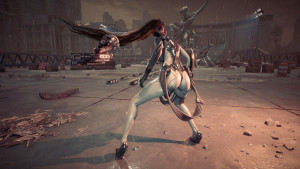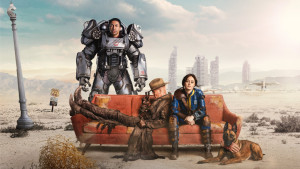Please support Game Informer. Print magazine subscriptions are less than $2 per issue
Eight Games That Changed Mid-Development

During development, video games go through hundreds if not thousands of changes before making it to the consumer. It’s a regular part of the development of any game. For some games, however, we get to see them as they evolve, and by the time they release they look or feel much different than what we expected. Sometimes, after the game releases, the developers reveal just how much the game changed during development. These are some of the most drastic changes.
Okami
Okami is one of gaming's most visually-compelling experiences, but it didn’t start out that way. In the beginning, Okami strived for realism. Switching to the cel-shaded art-style was done out of technical necessity so that Clover could fit as much onto the disc as possible. Once Clover landed on an art style it liked, however, it ran with it at full speed and created a game that will never look dated.
Borderlands
Borderlands, much like Okami, began its life with a realistic visual direction. The first teaser trailer for the game showed off a realistic shooter set in an intimidating wasteland. When the switch occurred, people were upset, but after the game released, everyone could see why the cartoonish-style meshed perfectly with the game’s humor.
Resident Evil 2
Often referred to as Resident Evil 1.5, Resident Evil 2 was scrapped and restarted late in development before it became the game it is today. Leon didn’t change much during the transition, but Claire was originally a character named Elza Walker, a college student vacationing in Raccoon City. Apparently, the game was nearly 80% finished before game director Shinji Mikami decided he wasn’t happy with it and wanted to restart. You can find footage of the nearly finished game online today. Apparently, the story for the scrapped version of Resident Evil 2 was much more conclusive, and could have served as an ending to the series.
Resident Evil 4 and Devil May Cry
Resident Evil 4 and Devil May Cry have a strange developmental bond. Devil May Cry began its life as Resident Evil 4, but as the team moved further and further into development, they realized that the idea of playing as a super-powered bad-ass with a sword didn’t fit into the Resident Evil canon. The characters were renamed, demons were added, and a new franchise was born.
Meanwhile, development truly began on Resident Evil 4. In a similar story to what happened with Resident Evil 2, the game was quite far into development when everyone threw up their hands and said, “Screw this! Let’s start over!” The original version of the game had Leon fighting an evil fog, experiencing hallucinations, and fighting apparitions and ghosts. A trailer was released based on this version of the game, and you can even see a full three and a half minutes of gameplay footage above.
Conker’s Bad Fur Day
It might not be surprising to learn that Conker started out as a children’s platformer. The game was announced in 1997 and it looked like an unspectacular platformer that did little to separate itself from Rare’s other Nintendo 64 titles like Banjo-Kazooie and Donkey Kong 64. The game went underground after it was first shown for three years, and re-emerged in 2000 as the profane adult-oriented game we know today. Outside of the trailer below, there is other evidence of Conker’s childish roots in the form of Conker’s Pocket Tales for Game Boy Color.
Bioshock

Bioshock’s original story had nothing to do with Andrew Ryan, underwater cities, or genetic superpowers. Players took on the role of character hired by a senator to rescue someone from a cult and reprogram them back into the normal society. At one time, it even took place in the 21st century in a recently unearthed Nazi laboratory.
Splinter Cell

Splinter Cell began internally as an RTS at Ubisoft, and before it made its way to a stealth action game, it took a pit stop where it spent some time as an adventure game on a floating island. Ubisoft was basically throwing ideas at a board until something stuck, and that idea ultimately became a Metal Gear Solid stealth game competitor.
Team Fortress 2

Valve is renowned for allowing its games to gestate over a long period of time, and Team Fortress 2 was one of the developer’s biggest offenders. The game was in development for nearly a decade. It was shown off for the first time in 1999 at E3 with a realistic military art direction, and then it just sort of disappeared. Many assumed the game had been abandoned as most of the team was working on other Valve projects. In 2006 the game was re-unveiled with its vastly altered art direction. In an interview with Robin Walker, co-creator of the original Team Fortress, about the development of Team Fortress 2 he said, "We ended up building probably three to four different games."










